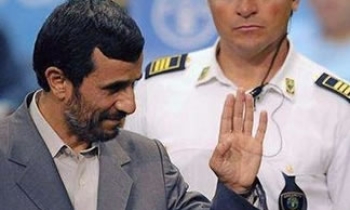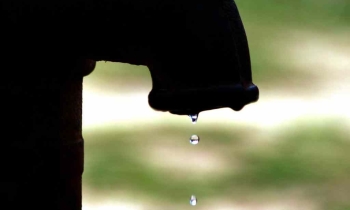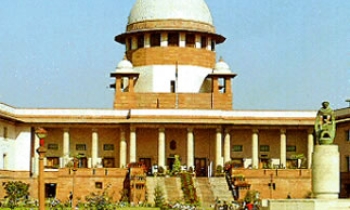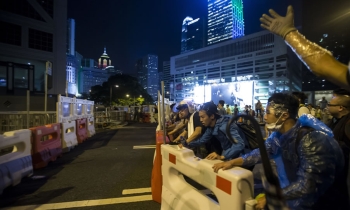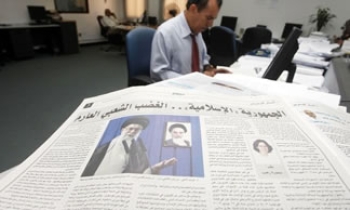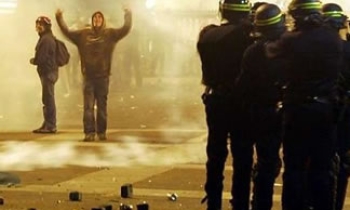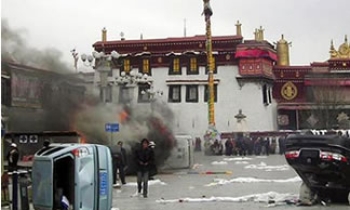Reporting conflict has become the greatest challenge for journalists in the northeastern part of India which has been reeling under the impact of insurgency for almost half a century. They are performing their duty in a condition of great stress and strain. There have been glaring instances of journalists being targeted by separatist outfits, and threatened, assaulted and harassed by security personnel. They are caught between the devil and deep sea in the war of attrition and varied perception of the role of media by the state administration, the security forces and the non-state actors.

In a bid to curtail propaganda of the proscribed secessionists’ organisations through local print and electronic media and curb their oxygen of publicity, the government of Manipur clamped an official order on August 2, 2007 under Section 95 of the Code of Criminal Procedure, 1973. The order says that any printed material i.e. either newspapers or books and any document whether printed or in electronic form shall be forfeited to the state government if they contain any material which are directly attributed to unlawful organisations, organised gangs, terrorists and terrorists related organisations considered to be subversive and a threat to the integrity of the state and the country.
The order of the state home department further forbids obituary notices of slain militants that would be glorifying them as martyrs of a freedom struggle. Publication of threats of any sort by terrorist organisations or unlawful organisations, publication of any code of behaviour, dress code or social practice decreed by such organistions, publication of any justification for killings, causing injury, assault, kidnapping, imposition of fines or warnings by such organisations, publication of notices for payment to terrorists related organisations or unlawful outfits in cash or kind and publication of items in the form of invitation to the aforementioned organisations to settle or solve disputes are all altogether banned by the official order.
Opposing the move vehemently, the All-Manipur Working Journalists Union (AMWJU) served an ultimatum to the state administration demanding. In a memorandum addressed to the Chief Minister, Okram Ibobi Singh, the union flayed the government of trying to gag the freedom of expression in democratic India by clamping a stringent restriction. The union further argued that if the order is to allowed to prevail, the national level television news channels would have to be banned from airing in Manipur and national level newspapers are to be stopped from circulating in the state; i.e., the state is to suffer a total cut-off of communication from other parts of the country.
The memorandum averred that the order has not only interfered with the freedom of the press but also restrained the only means of communication on which the people of Manipur depend on to bring about an amicable resolution to armed conflict in the state. Mediapersons being a third party in any conflict situation they are covering, have access to both clashing groups. That access may constructively be utilised in steadily gaining ground for peaceful negotiations. Moreover, the media may reflect more towards bridging the gulf of differences in lieu of bringing about the same. The government of India and the state governments of the region may explore the potential of the regional media players in this regard. The local media’s role in bringing peace in Mizoram was highly appreciated in the past.
The Manipur government has denied withdrawal of its order of August 2. Now the ultimatum of the AMWJU to withdraw the gag order has no takers in the state administration. The state government is firming its grip in controlling editorial content on the ground that there is more than enough militant propaganda in local media and the government at no point is going to tolerate any more. The journalists of the state may expect some modifications in the order, but it has come to remain as of now with all its consequences.
The order of the Manipur government is not in tune with the Press Council of India’s adopted reports on media coverage in insurgency-prone regions of the country. Acknowledging the gravity of the pressure journalists faced in Jammu and Kashmir, Punjab (during the height of Khalistan movement) and the Northeast states, the council conducted an enquiry in 1991 into the pressure the press in Punjab was subject to and the problems it was confronted with. A special committee was constituted to examine the problems and its report “Overcoming Fear†was adopted by the council. It extended full support to the press in Punjab in its effort to inform the people truthfully and impartially of the events taking place in their state by reflecting all parties of an event with due care and self-censorship and in resisting any diktats from terrorist groups.
In Kashmir, the council conducted more than one enquiry and in its inquiry in 1991 that covered the media crisis in Punjab also, the council accepting its special committee’s report “Crisis and Credibilityâ€, said the critical importance of information and communication in the complex and difficult situation in the state had not been adequately appreciated either by the government or the media. It suggested a series of measures to respond effectively to the complex situation. In 1993-94, the council conducted another inquiry into the problems facing the press in Kashmir and adopted a report entitled “Threats to the Media from Militant Organisationsâ€. In the report, the council asked the government to provide institutional and area security to media personnel who faced threats from the militants for taking an independent stand.
Arising out of a complaint against publication of some United Liberation Front of Asom (ULFA) press handouts and threat notes by a newspaper of Assam, PCI enunciated some general principles for the guidance of the press in this regard in September 1992. The guiding principles say that diktats or press notes commanding newspapers to publish them under duress or threats of dire consequences, emanating from elements wedded to violence constitute the gravest assault on the freedom of the press which is one of the surest guarantors of a democratic and plural society. Generally, such diktats or press notes are not newsworthy per se. Publication of such contents not only compromises the freedom and independent functioning of the concerned newspaper but also constitutes an offence against the standard of professional ethics and responsibility of the fourth estate of democracy.
The guiding principles further add that if there is anything newsworthy in a press note emanating from any source, this is not to say that it should be blacked out altogether, because self-censorship may be no less dangerous for being insidious. The bottomline is that editors must exercise due caution and circumspection in considering the dissemination of such press notes. If the whole content of the proscribed outfit’s press communiqué is not pernicious, then it may be edited, its objectionable portions removed and language toned down so that whatever is really newsworthy gets disseminated in an impartial and balance manner.
As per the guiding principles of the council, the fundamental factor for selecting editorial content for publication as news is to be newsworthy and not where it emanates from. The council advises to withhold the publication of a press note released by militants only when the newsworthy and the objectionable portions are inextricably mixed up.
According to the findings and recommendations of the “Crisis and Credibility†report on Kashmir, “.........The media cannot therefore turn away from critical situations entailing danger or retreat to safe havens, depending on handouts from any quarter. The people have right to know and to seek authentic, objective and wherever possible eyewitnesses or well-documented information.†It further says, "Newsmen and newspapers should report all sides and aspects of events fairly and objectively, citing sources, verifying facts, providing necessary contextual background and where possible, offering their own eyewitness observations, analysis of interpretation without editorialising.â€
As per the recommendations of the report, the most horrific events can be narrated with moderation and should be portrayed or displayed with sobriety so as not to exacerbate tensions. The concept of objectionable writing must be clearly defined and understood. If genuinely objectionable matter is to be curbed, pre-censorship is not the answer. This should be scrupulously avoided. The remedy lies in taking action under the ordinary law of the land with suitable appellate procedures. It would be desirable if the PCI were to be informed of all such cases.
In the PCI report on the media crisis in Punjab, the council recommended that the bandh notices and press notes from ultras should be edited and played down while positive developments should be mentioned and even highlighted as occasion demands. The most horrendous and sensitive events can be legitimately published with sobriety, using restraint language and headlines, avoiding excessive display or sensationalism so as to heighten fear and tension. While exercising due caution in disseminating press notes essued by terrorist groups, the press must also be vigilant against being used for official plants. The media cannot be anybody’s handmaiden or cat’s paw, because credibility is vital.
In the insurgency-ravaged northeastern part of the country, both state and non-state actors are trying covertly or overtly to keep local media in their control, because both the parties know that winning psychological war is half-won in an armed conflict situation and that war has a lone battlefield - media. Whenever they flex their muscles, the journalists of the region are in a Catch 22 situation.
Murder of investigative journalist Prabhat Goala and police atrocities on the Kakopathar correspondent of Asomiya Pratidin (an Assamese daily), Robin Dhekial Phukan; proscribed outfit ULFA’s threat to NE Television (NeTV); assassination bid on Times of India correspondent Xavier Russa (Nagaland); attack on Ratan Luwangcha, former Bureau Chief of the Poknapham by ultras; holding of five newspaper editors and one news editor of a local private TV network as hostage and forcing them to publish their press communiqué by an underground organisation before they were set free unharmed in the recent past; and a faction of an underground organisation’s threat to the Sangai Express newspaper on July 31, 2007 in which the proscribed party kept a bomb at the newspaper office against the daily’s denial to publish the organisation’s press release; are some of the recent glaring incidents in which journalists of the region had to face troubles as professional hazards.
In Assam, Ajit Bhuiyan, editor of the local weekly Sadin and Rajendra Narain Dutt Barua of the English daily the News Star were arrested under TADA on the flimsy ground of having links with ULFA activists. When a young journalist Amin-Ur-Rehman wrote a critical piece against the underground organisation Tablighi Jamaat in a Bengali daily, Samaya Prabha, he was threatened with death sentence unless he apologised for his mistake. He had to flee for his life and after a long agitation by journalists, he was spared. One of the underground organisations operating in the state had tried unsuccessfully to kill the editor of the Sentinel, Dhiren Bezbaruah.
In Manipur three newspaper editors, RK Sanatomba (1993), Lalrohlu Hmar (1999) and Th Brajamani (2000) and an electronic media journalist Y Megha (2002) were shot dead by unidentified persons. Only in the case of Lalrohlu, the Hmar Revolutionary Front (HRF), an underground organisation operating in the southern part of the state, claimed that the UG group was responsible for it. Other incidents remained unclaimed. The state government could not even trace who may be behind such attacks.
In 2006, the General Secretary of the All-Manipur Working Journalists Union (AMWJU), Ratan Luwancha was targeted by some activists of an underground group within zero mile from the state capital, Imphal with ten rounds of bullet at his own home in the morning while he was reading newspapers. P Labango, editor of the evening Manipuri daily Kangla Pao also had faced a bullet attack near his eveninger's office in Imphal. Bijoy Koijam, the sitting MLA of Manipur had also luckily survived from a life attempt when he was working as a journalist. An insurgent group also bombarded the office of an upcoming daily newspaper, Lamyanba in Imphal and editor of the daily Irengbam Arun had to run for life and hide. He was spared only after much clarifications in 2000.
Ban of publication of newspapers by underground elements, ban of transmission of local private TV Network by the state government and underground elements, and dictating terms or trying to manufacture a guided press both by legal and ultra-legal forces have been witnessed by the people of Manipur time and again. The founder president of the Editors Forum, Manipur (EFM) Bharat Bhushan, the present Irrigation and Flood Control Minister of the state and former editor of the local vernacular daily, Naharolgee Thoudang, N Biren, editor of the one time popular local English daily, the Freedom, RK Ranendrajit, to mention a few, had to enjoy the state government’s hospitality in jail on the charges of sedition and threatening national security through their editorial contents which were never proved and they had to taste prison life for weeks and months.
There is an alarming scene and a cause of concern when we look at the cumulative figures since 1997 to 2006 of the violations of the freedom of press in Manipur by both state and non-state actors. Many of these violations are effective techniques to gag the Fourth Estate either not to reveal disturbing truths or to warn the journalist fraternity to follow the track, the pressure groups opted for. During the past decade there were three murder cases, two attempt-to-murder cases, 22 cases of arrest/detention, 28 cases of assaulting/humiliating journalists at reporting sites, 21 cases of threatening /harassing media persons, one case of reprimanding an editor of a local vernacular daily, Matamgi Yakairol by the Manipur Legislative Assembly, and one case of taking into hostage of newspaper and television news editors, and 20 cases of banning local private television network by state administration and ultras and stopping newspaper publication by journalists in protest against the pressures imposed upon them. To work as a journalist in such an unspeakable situation itself is playing a dangerous game.
[Aribam Ibomcha Sharma is Guest Lecturer, Department of Journalism and Mass Communication,Manipur University]
Reference:
- Future of Print Media - A Report of Press Council of India, 2001, New Delhi.
- Media Ethics, Veda to Gandhi and Beyond, K.M.Shrivastava, Publications Division, Ministry of Information and Broadcasting, Govt. of India, 2005, New Delhi.
- Milligazette, (ed.) Dr. Islam Jafarul, 1-15 March, 2005, Nice Printing Press, New Delhi.
- A Manual of International Humanitarian Law, (ed.) N. Sanajaoba, Regency Publications, 2004, New Delhi.
- A Study of the Coverage of North-East in National Dailies, A. I. Sharma., 1999, Deptt.of JMC, Guru Nanak Dev University, Amritsar.
- Newspaper files of three vernacular dailies of Manipur “Poknaphamâ€, “Matamgi Yakairol†and “Hueiyen Lanpao†for the years 1997 – 2006

